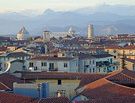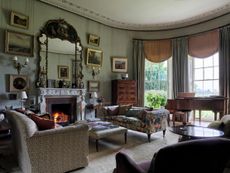Italian property market robust
Italy’s artistic heritage, prudent mortgage policies and tight planning controls ensure that it’s weathering the current credit storm

Italy’s positive property cycle, which saw prices rise by an average of about 6.5% a year between 1997 and 2006, has now come to an end. Demand is contracting, with sales volumes down by an estimated 14%.
* Luxury property for sale abroad
The national market trend, chiefly shaped by Italian demand for primary homes, often in urban areas, is seeing reduction in demand, a lengthening of sale times, an increase in supply and a wider negotiation margin for buyers. But premium second homes are performing slightly better. For the best properties— which Fabrizio Savorani of estate agents’ association FIMAA defines as ‘the most attractive resale homes situated in a panoramic position or by the sea, with easy access to the beach, a marina or the ski slopes; and new builds, particularly bright and airy ones with large outdoor areas’—prices have risen by an average 3.9% in mountain resorts and 3.4% in seaside ones.
Established second-home destinations remain the winners. According to FIMAA, fashionable resorts, such as Cortina d’Ampezzo in the Dolomites or the Cinque Terre in Liguria, have recorded price increases of 4% or above. New builds in Italy’s top second-home locations, such as Porto Cervo, Santa Margherita Ligure, Capri or Forte dei Marmi, now cost well beyond €10,000 per sq m, and in Portofino, resale homes command a staggering €18,000– €22,000 (the national average is €1,580, according to the Agenzia del Territorio).
So, despite the slowdown, Italy appears more solid than other economies. ‘Although the credit crunch has created a distance between demand and supply, Italy has elements that help it defend its property values over time,’ says Guido Lodigiani of agents Gabetti. ‘Many buildings are protected by the Belle Arti [listing authority], in many places there is great attention towards landscape conservation, and, although there is now a supply surplus nationwide, in areas loved by foreigners, such as the Lakes, there are physical constraints that limit the availability of properties for sale.
‘Being within the Eurozone gives Italy exchange-rate stability, and the country’s historic, cultural and architectural heritage gives some guarantees over the solidity of property values.’
According to property intelligence company Scenari Immobiliari, the Italian market performed better than those of the other four biggest economies in the EU (Britain, Germany, Spain and France) and is likely to close with an annual increase in turnover of 0.9%, against increases of 0.7% in France and 0.5% in Germany, and drops of 1.1% and 4.7% in the UK and Spain. The Knight Frank Global House Price Index also shows that Italian prices are more resilient. In the second quarter of 2008, the Italian house-price inflation rate was the same as the previous year’s, with a 5.4% annual increase, which is far higher than in countries such as France (3.2%), Spain (2.4%) and the UK (–3.9%), not to mention the US (–16.8%).
Sign up for the Country Life Newsletter
Exquisite houses, the beauty of Nature, and how to get the most from your life, straight to your inbox.
Bill Thomson of Knight Frank comments: ‘We still have good demand for the right thing, with lots of picky buyers who aren’t in a hurry to make up their minds, but are still of the view that Italy is a pretty stable place to invest their money, both socially and economically. Sr Lodigiani adds: ‘The emotional attachment and the perception of property as a safe investment haven’t changed. In Italy, homes have kept their characteristics as a sought-after ‘shelter’ asset.’
-
 Dawn Chorus: The world's highest property has a fittingly sky-high price
Dawn Chorus: The world's highest property has a fittingly sky-high priceOur daily round-up of news includes a flat that's 2,500 ft above the ground, our stop-you-in-your-tracks picture of the day, a chance to see two of Country Life's best-loved experts, and news about our Quiz of the Day.
By Toby Keel Published
-
 Brockfield Hall, the great Yorkshire house that's gone from Regency mansion to modern family home
Brockfield Hall, the great Yorkshire house that's gone from Regency mansion to modern family homeBrockfield Hall in North Yorkshire is the family home of Charlie Wood and Hatta Byng, editor of House & Garden, who have transformed it since they came here in 2020, winning multiple awards in the process. John Martin Robinson reports on the restoration project that revived this compact Regency house as a modern family home. Photographs by Paul Highnam for Country Life.
By John Martin Robinson Published